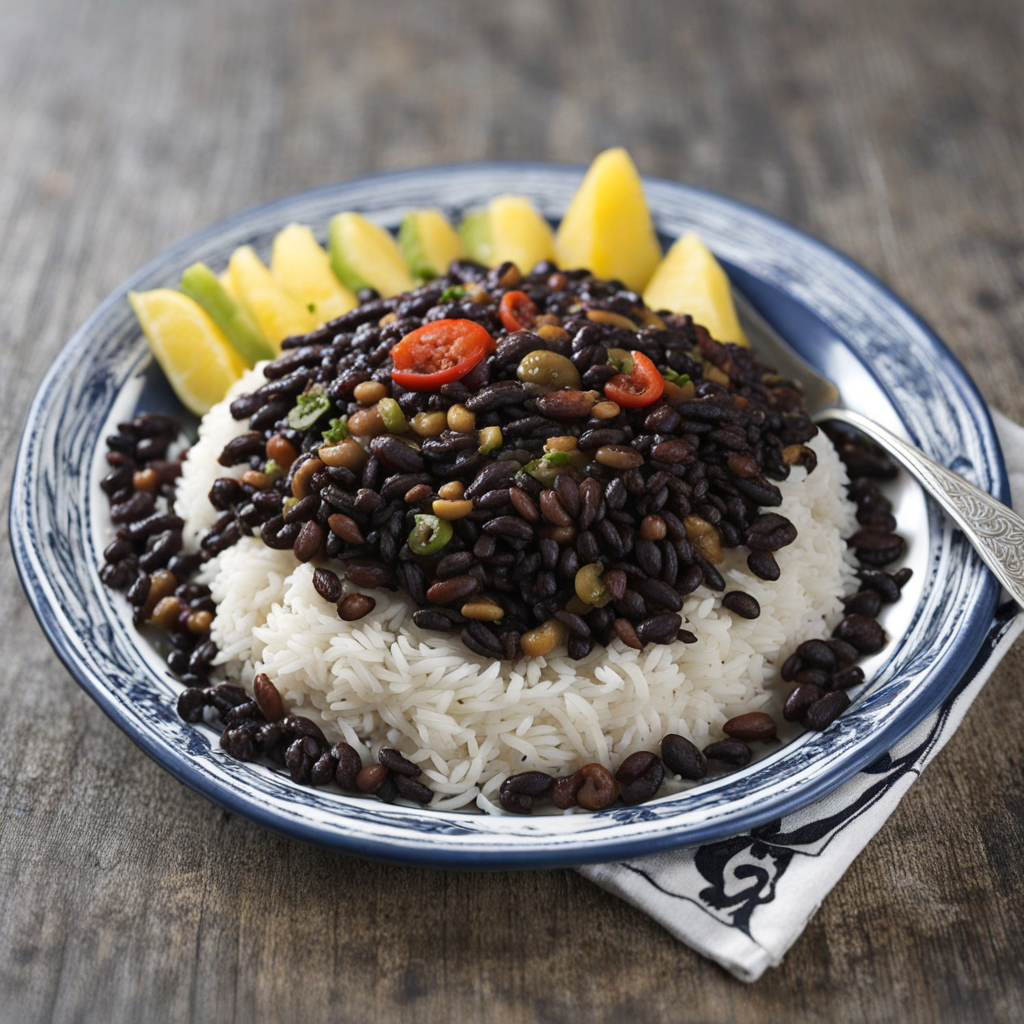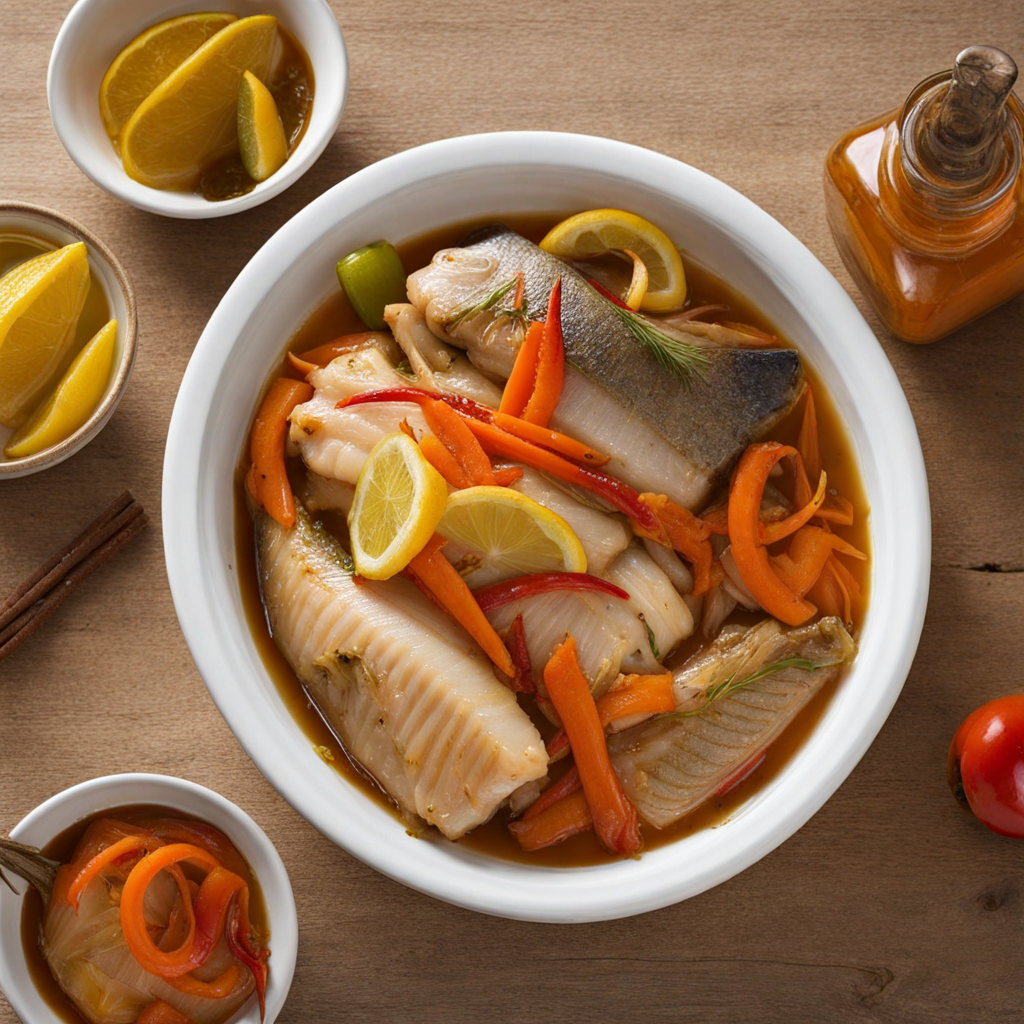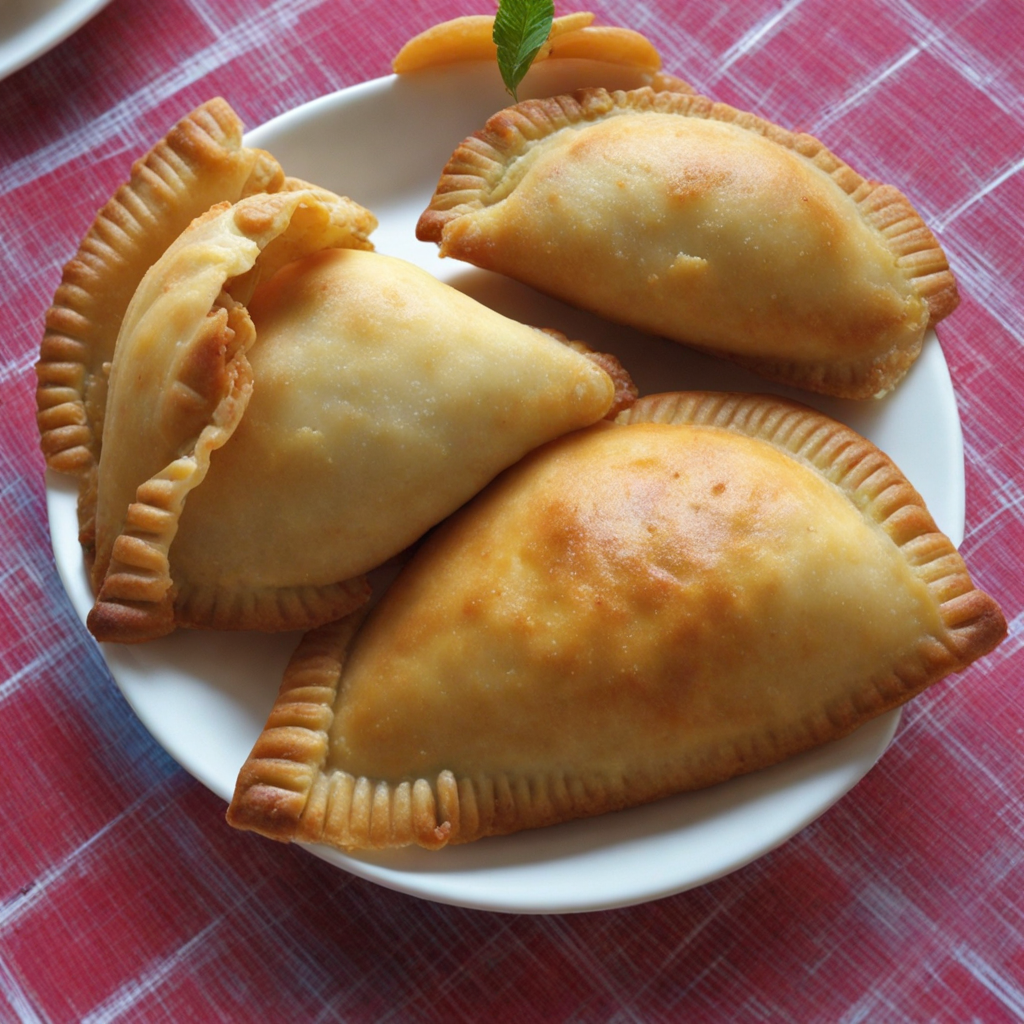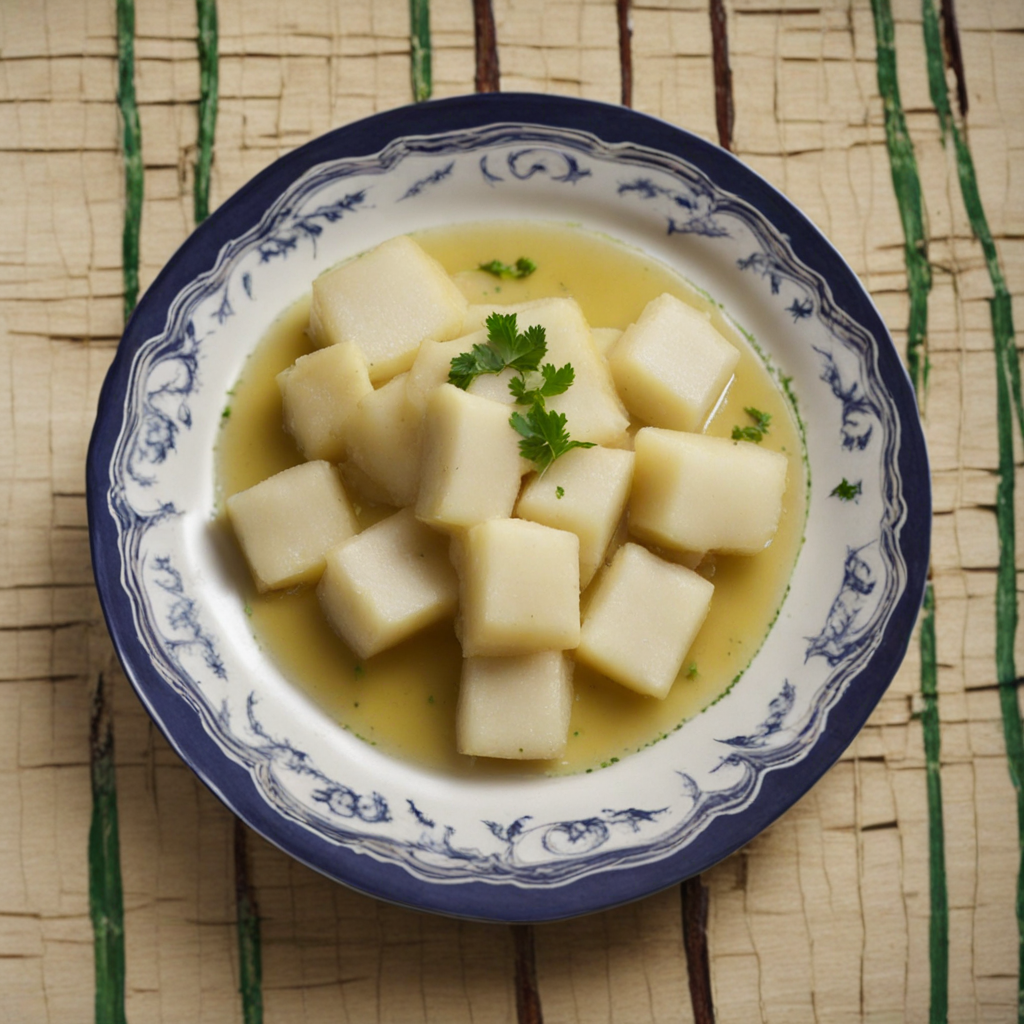Moros y Cristianos
Moros y Cristianos is a traditional Cuban dish that beautifully marries the flavors of black beans and white rice, creating a vibrant and hearty meal that is beloved across the island. The name translates to "Moors and Christians," symbolizing the historical coexistence of African and Spanish cultures in Cuba. The dish features black beans cooked to perfection, seasoned with ingredients like garlic, onion, and bell pepper, which infuse the beans with a rich, savory depth. As the beans simmer, they create a luscious sauce that coats the rice when served, making every bite a delightful experience. The preparation of Moros y Cristianos is an art form in itself, often reflecting the cook's personal touch. The rice is typically prepared separately, achieving a fluffy texture that complements the tender, simmered beans. Once combined, the contrasting colors of the black beans and white rice create a visually stunning dish that is as appealing to the eye as it is to the palate. When served, it’s common to add a dash of vinegar or a sprinkle of fresh herbs like cilantro to brighten the flavors even further, enhancing the overall taste profile. This dish not only represents a staple in Cuban cuisine but also serves as a canvas for various adaptations. Many enjoy it with additional accompaniments such as fried plantains, avocado, or a side of marinated meat, which add layers of flavor and texture. The combination of the earthy beans, fluffy rice, and vibrant seasonings makes Moros y Cristianos a satisfying and soul-warming dish that invites food lovers to explore the rich culinary heritage of Cuba.
How It Became This Dish
Moros y Cristianos: The Culinary Legacy of Cuba Moros y Cristianos, a staple dish in Cuban cuisine, is a vibrant representation of the island's rich history and cultural tapestry. This dish, translating to "Moors and Christians," consists of black beans (the Moors) and white rice (the Christians), symbolizing the historical clash between the two cultures during the Reconquista in Spain. The dish not only serves as a delicious meal but also as a cultural artifact, embodying the complex interplay of influences that shape Cuban identity. Origins: A Culinary Metaphor The roots of Moros y Cristianos can be traced back to Spain, where the Reconquista—a centuries-long struggle between Christian kingdoms and Muslim Moors—took place. This pivotal period in Spanish history saw the blending of culinary traditions, as the Muslim Moors brought sophisticated agricultural techniques, spices, and new foods to the Iberian Peninsula. When the Christians finally triumphed in 1492, they absorbed many of these influences into their own culinary practices. The dish itself emerged as a reflection of this historical narrative. The use of black beans and rice symbolizes the coexistence and conflict between the two cultures. In Cuba, this dish became popular among the diverse population, incorporating elements from African, indigenous Taíno, and Spanish cuisines. It is a prime example of how food can encapsulate stories of migration, colonization, and cultural fusion. Arrival in Cuba: A Melting Pot of Flavors The arrival of Spanish colonizers in Cuba in the late 15th century initiated a new chapter for the island's culinary landscape. They brought with them their agricultural practices, livestock, and crops, including rice and beans. As the Spanish settled and established plantations, they cultivated rice and introduced black beans, which were already a staple in many Latin American diets. The African slave trade, which began in the 16th century, significantly influenced Cuban cuisine. Enslaved Africans brought their culinary traditions, techniques, and flavors, further enriching the local gastronomy. They incorporated spices and cooking methods that transformed the way Moros y Cristianos was prepared. As the dish evolved, it began to reflect the island's diverse population and their respective culinary contributions. Cultural Significance: More than Just a Meal Moros y Cristianos is not merely a dish; it is a symbol of Cuban identity and resilience. The preparation and consumption of this meal often occur during significant celebrations, such as holidays, family gatherings, and festive occasions. It exemplifies the communal aspect of Cuban culture, where meals are shared and enjoyed together. The dish has also become a source of national pride. In a country marked by its complex history of colonization, slavery, and cultural exchange, Moros y Cristianos stands as a testament to the harmonious blending of diverse influences. It reflects the spirit of Cuba—a nation that celebrates its differences while finding unity in its culinary traditions. Development Over Time: A Culinary Evolution As Cuba faced various socio-political changes throughout the 20th century, Moros y Cristianos continued to evolve. The Cuban Revolution of 1959 brought about significant shifts in the country’s economic and social landscape. During this period, the government emphasized food security and self-sufficiency, leading to changes in agricultural practices and the ingredients available for traditional dishes. Despite these challenges, Moros y Cristianos remained a beloved dish within Cuban households. It became a symbol of comfort and nostalgia, a reminder of family traditions and shared meals. The dish's adaptability allowed it to thrive even in times of scarcity, as families learned to make do with available resources. Variations began to emerge, with some Cubans adding spices such as cumin or bay leaves, while others incorporated different types of beans or rice. In the diaspora, especially in the United States, Moros y Cristianos found new life. Cuban exiles brought their culinary traditions with them, and restaurants began to feature the dish, introducing it to a broader audience. This exposure allowed Moros y Cristianos to transcend its regional roots, becoming a culinary ambassador for Cuban culture. Modern-Day Moros y Cristianos: A Culinary Icon Today, Moros y Cristianos remains a beloved dish, emblematic of Cuban cuisine. It is commonly served alongside fried plantains, yuca, or roasted meats, creating a balanced and satisfying meal. The dish's preparation has also been embraced by chefs who explore its historical significance while also experimenting with modern culinary techniques. In contemporary Cuba, Moros y Cristianos continues to hold a cherished place in the hearts and kitchens of the Cuban people. It is often featured in gastronomic festivals and events that celebrate the island's culinary heritage. The dish serves not only as a meal but as a narrative thread that connects generations, weaving together stories of struggle, resilience, and cultural pride. Conclusion: A Dish that Tells a Story Moros y Cristianos is much more than a delicious combination of rice and beans; it is a culinary narrative that encapsulates Cuba's historical complexities and cultural richness. This dish stands as a testament to the island's ability to adapt, evolve, and thrive amidst change. As it travels beyond its origins, it continues to unite people through shared experiences and memories rooted in food. In a world increasingly divided by differences, Moros y Cristianos serves as a reminder of the power of food to bridge cultures, foster understanding, and celebrate diversity. It is a dish that transcends time, encapsulating the essence of Cuba—a place where history, culture, and flavor intertwine to create a unique and enduring culinary legacy.
You may like
Discover local flavors from Cuba







